If you're new here, you may want to subscribe to my RSS feed. Thanks for visiting!
Author of The Dark Secrets of SHTF Survival and the online course SHTF Survival Boot Camp
NOTE: If you missed the first article in the Urban Survival Course series, go here to read it. Today, we’ll continue on with Selco as he teaches us the lessons students learned in his last course in Croatia.
Urban Survival: Keeping a Low Profile
The Hollywood industry, fiction survival books and our imagination over the many years kinda taught us to expect big things and to think in big terms when SHTF.
As a result, a lot of preppers forgot to use common sense in preparing and thinking. Actually, they forgot to be aware and to notice little things around them. They were expecting big things so they forgot small things and techniques that are actually important. That can eventually get you in trouble or get you killed.
To understand better how things can be hard when SHTF you need to put into perspective how noise and light work in different situations, or in other words how light and noise can be your enemy or friend depending on what situation you find yourself during SHTF.
Noise
Often you have seen in the movies or read in a book how someone sneaks up on someone or through some building.
In reality, students are shown that there are no ninja warriors. Remember we are talking about average folks here. If they are forced to survive in some dangerous situations they simply need to know:
- some basic technique of walking (sneaking)
- a lot of time and patience
- proper clothes (not noisy definitely)
- proper preparations before taking action (checking for things in pockets that make noise, etc.)
- a lot of practice
But the highlight is on time; you need time to do it the safe and secure way (even if you are highly trained). So, in reality (if it is dangerous) it may take you an hour to cover 20 meters sometimes.
Definitely, it is not like in the movies.
You can use sounds in surroundings (or background) to cover your movement (for example in this photo, it may be the sound of waves or wind through the trees) but again, you need a lot of time, and skill.
Now put that in perspective of real urban survival, and a situation where you need to check some building (for example to take shelter) that looks abandoned, with things on the ground that simply make too much sound. Sometimes it is impossible; sometimes it does not make sense to even try.
Moving in a group and staying quiet is a skill that is possible to learn, through the familiarization of group members, the use of hand signals, and proper preparing (again proper equipment, footwear, clothes). That technique makes sense to be put to the test in a hard situation like dark and bad weather (rain, wind) where you can try to use that weather and night in your favor. It’s also important to see how everything can easily go against you (conversation-signals in pitch dark, loss of orientation, losing group members.)
[page_section template=’3′ position=’default’ shadow=’#dd9933′]
Have you taken Selco’s online courses yet?
Taking the online courses are the next best thing to getting over to Europe and studying with him personally.
- SHTF Survival Boot Camp teaches you both urban and wilderness survival skills, primitive first aid, and lessons on violence that you’ll never forget.
- One Year in Hell is Selco’s original course that shares the dark truth about what it was like to live in a city under siege. He talks about the signs he missed, what happened when chaos erupted, the grim sanitation conditions, and how his life completely changed.
If you want the real deal from a legend who has lived through the SHTF, these are the online courses for you.[/page_section]
Light
If you tell average students group to start a fire so they can prepare a quick meal or make coffee, most of them will make a huge fire big enough to cook a boar on. If you tell them to turn on the flashlight to find something in their backpack, a lot of them will turn on a torch that will burn the eyes of all people around them, affecting their night vision badly.
Strong torches and big fires make sense sometimes, but in urban survival prepping staying undetected is a big priority, and you need to adopt that kind of philosophy first.
Planning your movement during the day, and taking that particular route during the night, even in an urban environment in SHTF settings, can be two completely different things, even if you saw (or went through) that area during the day.
It is very easy to get disoriented in pitch dark, and known buildings are not known anymore. Distance may look completely different, and the combination of everything may be very dangerous if you are not aware of that.
In the photo above there is a camping fire (not hidden) in an abandoned building in an area where there is no other light. It is clearly visible from 200-300 meters.
Your Mind
What do you see in this photo?
The photo above is taken after midnight in an area where students did not expect people to be. (The students were driving with us in a car during one of the exercises).
Students after the encounter described the man as a “very tall” (2 meters or 6’5″) person in a full white bodysuit, probably a man with no good intention (drug dealer? body disposal?).
The encounter lasted a few seconds.
After that, they made camp in close vicinity to where the “man in the white bodysuit” disappeared into the bush.
And of course, their minds continued to play dark scenarios in their heads for rest of the night.
They did not have a nice night because of that.
In reality, it was one of our “ghost” instructors. He wore full camo and a clown mask – both were very visible (much better than in photo) but in the given circumstances (very late and a strange person walking slowly in an area where there is not supposed to be anybody) the students mind offered a solution of what man is there and his intention.
Your mind WILL play tricks on you in survival situations. If you are in an uncommon situation or you are not very experienced when you are not sure what you see or hear your mind will offer you an answer. Often, that answer may be wrong, which may lead you to make some bad decisions.
It is the reality of SHTF.
Learn to use your skills under pressure
A big part of the course is using your skills and techniques under PRESSURE when you are not sure what is what, and that is a topic for other articles.
You can avoid that by training:
- Rechecking how things work in the real world
- What is visible from what distance
- What can you hear from where
- How many details can you spot and memorize
- How good your orientation skills are
All that can be practiced in normal times, some in nature while hiking, some while drinking coffee in town by observing the people around you.
Again it is not about ninja warriors. It is about being aware of the world around you in different settings.
About Selco:
Selco survived the Balkan war of the 90s in a city under siege, without electricity, running water, or food distribution. He is currently accepting students for his next physical course here.
In his online works, he gives an inside view of the reality of survival under the harshest conditions. He reviews what works and what doesn’t, tells you the hard lessons he learned, and shares how he prepares today.
He never stopped learning about survival and preparedness since the war. Regardless of what happens, chances are you will never experience extreme situations as Selco did. But you have the chance to learn from him and how he faced death for months.
- Read more of Selco’s articles here.
- Buy his PDF books here.
- Buy his #1 New Release paperback, The Dark Secrets of Survival here.
- Take advantage of a deep and profound insight into his knowledge by signing up for his online course SHTF Survival Boot Camp.
- Learn the inside story of what it was really like when the SHTF with his online course One Year in Hell.
Real survival is not romantic or idealistic. It is brutal, hard and unfair. Let Selco take you into that world.

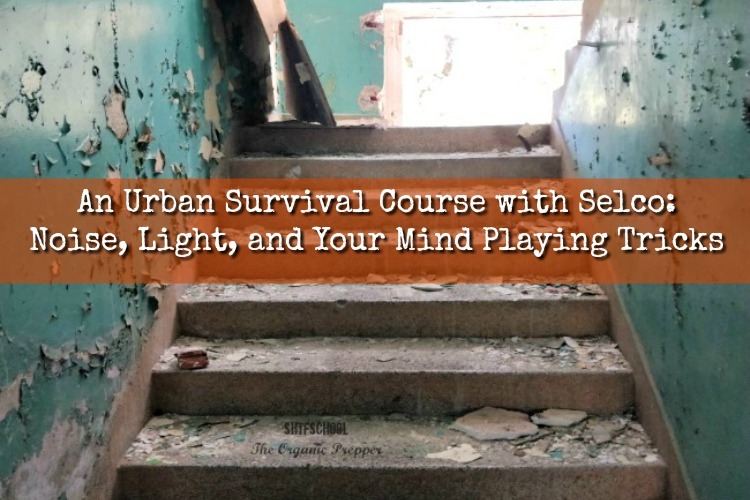
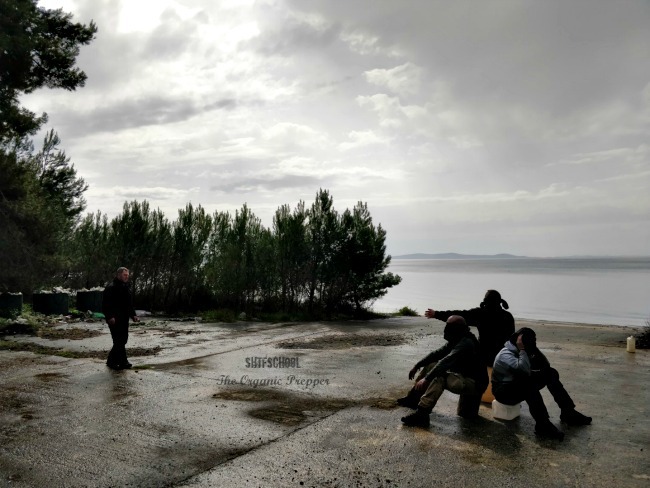
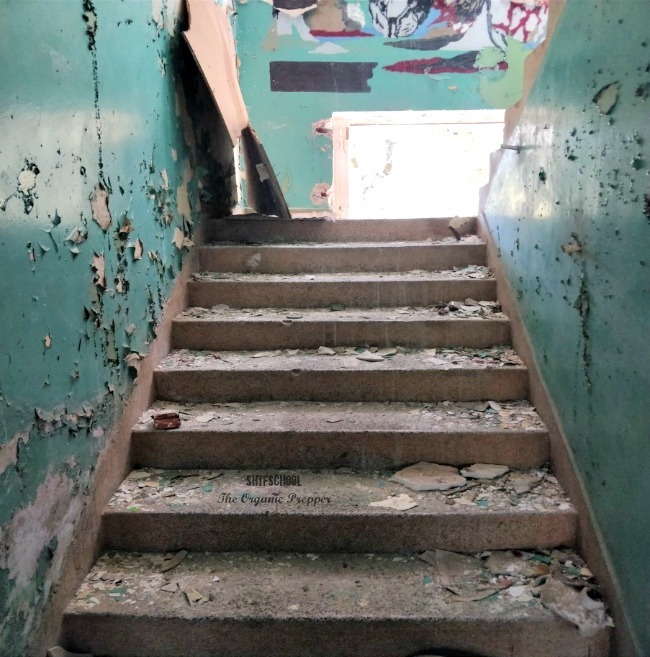
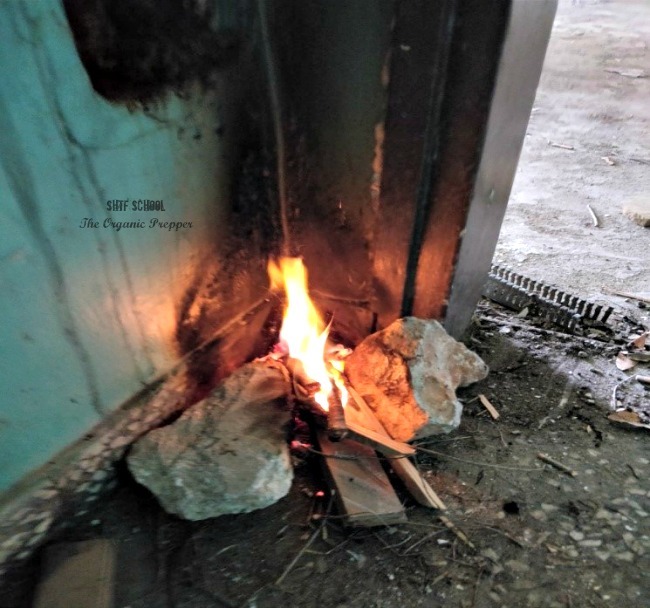
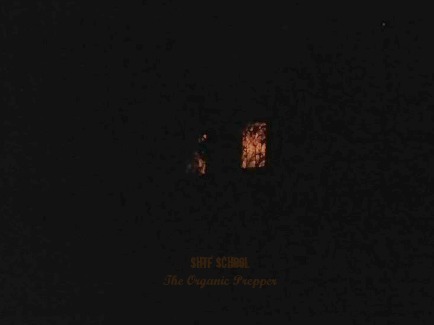
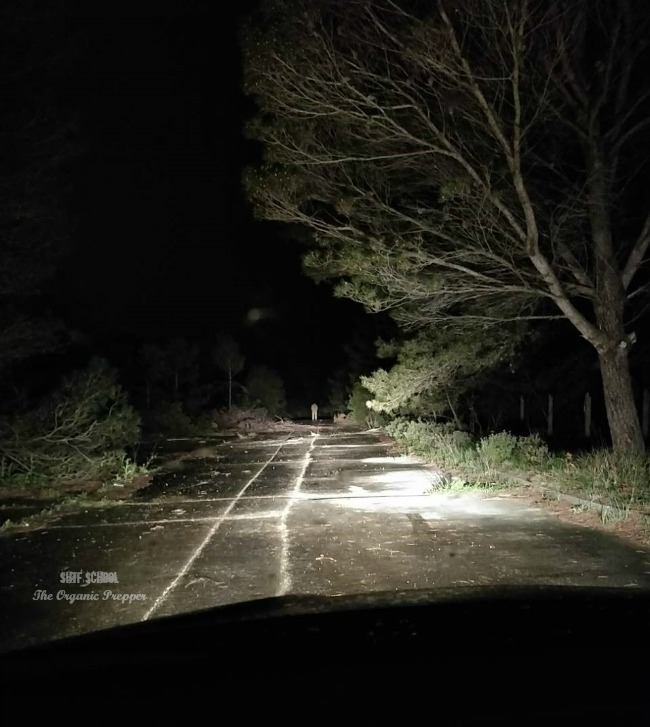














18 Responses
Based on my experience, selco is a fraud. He misses the real fine points and only talks about the obvious so readers can think to themselves that they would do the same things and so selco must be correct.
You don’t offer any proof of what or who you criticize. You sound like a fraud.
Based on MY experience, the advice Selco gives is usually good. The difficulty here may be that good sound advice is often simple advice, and it’s easy to say “oh, I could do that/could have done that” in the friendly light of day, when you’re well fed and warm, and not so easy to remember that advice when you’re shivering in the dark with little to no support. I’d like to see some sources too.
Great article. Too bad the training photos did NOT show on my phone.????
I’m so sorry! I’m not sure how to fix this. The photos are embedded on the site.
Good article, makes you think. Thanks!
Gandhi (Nonviolence avitar on a preeper site? Really?)
Selco is no fraud. But, you are right he keeps things general. When he gets specific which he has done in several articles I’ve read he gets super specific. So detailed and specific that such and such situation is not likely repeatable.
But, you’re looking for an example where Selco breakes with common preeper ideas….
Apparently Selco believes that rural isolated standalown ‘bunker’ preps are dangerous, easily targeted and stupid. (If you call yourself a prepper rural bunker or homestead preps are the norm and are pushed hard by most online groups.) Instead he seems to be focusing on urban survivalism, ‘staying gray’ and preferring that the people he trains eventually organize into groups.
Selco is a war vet, his experience is that preppers that ‘dig in’ get blown up (or worse) by the first ‘army’ that notices them (he’s not wrong). And well that’s good and all; but ‘war’ is just one example of things people prep for.
Different challenges require different preps. In a natural disasters for instance a rural bug in prep (farm) will work in your favor for a long time. At least until civil unrest in the cities blows over (or those starving cities come knocking on your door), and Selco is not wrong in pushing toward working with others in your community in the same situation you find yourself in.
(Blowing up your ‘farm’ may not have the same effect if the other ‘farmers’ in your community see you as one of them and not some lonewolf prepper gun nut.)
If I have a problem with Selco it’s that he has a hammer (a really good hammer built from personal experience; so half a dozen of one…). But, he has come to think everything is a nail.
I also believe Selco is not a fraud based on reading his Blog over the years and having known people from that locale. If someone wants in-depth details perhaps reading Tom Clancy would satisfy them. But if skills, personal and abilities rank higher than equipment, then there a lot to think about at SHTF School. If the above article seems “obvious” consider it is one part of an article about his course in Croatia. Sort of a flyover to give an idea of what it is.
If the above poster would care to share, “Based on experience” what would the “fine points” be? We can all learn from different viewpoints.
Concerning standalone “bunkers” I like Pastor Joe Fox’s allegory if you are fighting the enemy at your mailbox then it is too late. Better to go out along with your neighbors to fight them if only to make them take the path of least resistance.
City fighting would be different as it would go underground, ie. subways, utility and hand made tunnels. Even in Indochina one reason the war was lost was due to the vast tunnel systems that could not be bombed from above. And I assume underground structures have only gotten deeper and better since then.
From your post “he has come to think everything is a nail.” I don’t get or understand if only because as I have read Selco, it is more pragmatic to avoid an encounter if possible. Pick your battles. Of course, this is my perspective. In his replies to posters he shows polite constraint and one expression that sticks with me, “bones melting” I perceive him to be a real/honest person.
best
@Gondor,
Good post.
I find Selco’s experiences and insight valuable.
But I do differ with him as to some aspects in regards to a SHTF event were to happen in the US. There are similarities, but there are also differences, terrain, land mass, population densities, climate etc.
I live in a rural area. Nearly everyone here has at least a deer rifle, a turkey gun, and a .22 of some kind. Many have more. Some even a whole lot more.
We may not know each other by first name, though many of us do, we say good morning at the post office. We wave or honk as we drive by. And we know we are not going to make it with out community (Out here snow/ice storms are not uncommon, we give a helping hand when needed).
And out here, we are a very long way from any army. If anything, with the number of vets out here, we are the closest thing to a army.
1stMarineJarHead has a good point that unless you grew up in rural American you might not understand. I grew up in a rural farming community and though folks there are generally not rude to outsiders, if you didn’t grow up there you are an outsider. You can’t just bug out there and expect to be a part of the community. Neighbors are miles apart but have known each other for generations. So there is a difference between living in a rural location or just bugging out to one. Also, like 1stMarineJarHead points out every household has multiple guns. That’s just country life. To someone who grew up there the country seems like the safest place to be in a shtf situation. No disrespect to Selco, but not everyone’s situation is like his. His information is awesome, he has seen things I hope to never see but his teachings are not a one size fits all solution.
Selco,
Thanks for the article.
The following story is in left field. Please bear with it.
Recently I temporarily moved into a house that was left unoccupied. Since it was located next to a creek there were indications of rodents inside, ie. droppings, paper shredded nests. I put talcum powder along the floor baseboards as rats are nocturnal travelers and move by their tactile sense as supposedly they have poor eyesight, but super hearing. They are creatures of habit not traveling more a couple of hundred yards from their outside nest. Their distinctive 4-5 star toe tracks left in the talcum powder suggested where to leave the traps, oatmeal with peanut butter balls, later mixed with poison once they got used to feeding off them.
I quickly learned rats are better at adapting then I was. I set traps with latex gloves to avoid getting skin oil on them, used double/triple bind trap situations. Then I learned they have UV sight and moved at night by following their previous urine markings so I got an ultraviolet light to see their paths. I learned to recognize their odor and their high pitched shrill sounds. (Interestedly, they mark each other according to the pecking order.) Add to this there are brown and black rodents.
So, what does this have with moving at night?
Smell is a sense that might be useful in a SHTF scenario. In Vietnam one guy could detect VC by their body odor because of the food they ate. Using cologne was begging for an ambush. It still amuses me, in one of Selco’s blogs a person was captured by a gang and interrogated by the leader who didn’t stink. (Happily, he knew Selco and was released.)
People are like rats, creatures of habit and in their pecking order. Again, another Vietnam story. Traveling along paths was “Binary”, basically either you turned left or right. Someone told me he and twenty personnel were trailed for two or so days by a group of fifty NVA, beyond sight distance. Although only hand signals were used and care was taken to minimize tracks and sound, the NVA leader could predict what direction the U.S. leader would choose. As they were closing in, the person stopped and thought, “What trail would his girlfriend use?”. It worked. He zagged, they zigged.
Turn a map around, north and south, and people will be confused reading it. Using a bead counter at night might help. Red light is for following a blood trail. A small jet stove using minimum fuel, alcohol best for less light and smoke, made from a soda can is light and efficient. People are going to go to relieve themselves mostly likely in the same spot. There is Scat tracking. If the other side has dogs that haven’t already been eaten, good luck.
I’m assuming in a SHTF world people will behave more like animals, so perhaps studying nocturnal animal behavior might help? I learned although I rid the house of infestation and I not too proud to say it, they were smarter … at adapting. Once they learn to type, it’s over.
Ps. I enjoyed the first article. Is there a list of medical supplies or that is for the course? Once the class is over, that part of the Adriatic up to the Austrian Alps is very beautiful, inexpensive to travel and the people are warm and friendly.
thank you Selco
We have gotten so fat and lazy. Beguiled by our modern way of life that when the SHTF all our skills and common sense to survive will be lost.
It’s good to be an American Indian at this time. They definitely were in tune to nature.
“Were” seems to be the important word there. Back before the Indian Removal Act of 1830 and the advent of the reservation system, Native Americans had to be stealthy and attuned to nature. They hunted to survive and fought guerrilla style wars with each other.
A hundred and fifty years of reservation living haven’t helped Native Americans (as a generalized class of people). Most all of the Red Lake tribal members that I encountered (while living in northern Minnesota), were as loud and brash (avoiding the ‘fat and lazy’ descriptions) as any white man.
Everyone needs to learn how to be quiet.
The pic of the person in the middle of the road, I thought it was a guy, taking a leak.
Lol, that’s exactly what I thought.
great info! I can (.. and have) walked through an area without making so much as a peep. It depends on what surface you walk on and the type of shoes you’re wearing. It also depends on how you place your feet on the ground when you walk..heel rolling towards the toes works for me ..this has to be done with a fluid movement.
I had done this on quite a few occasion leaving the Hospital at night to go home through the lobby…had a few people wandering around and “spooked” more than one when I passed them without making a sound.
Mais uma otima portagem!
Obrigado por compartilhar seu conhecimento Selco. Acompanho seu blog a muito tempo!